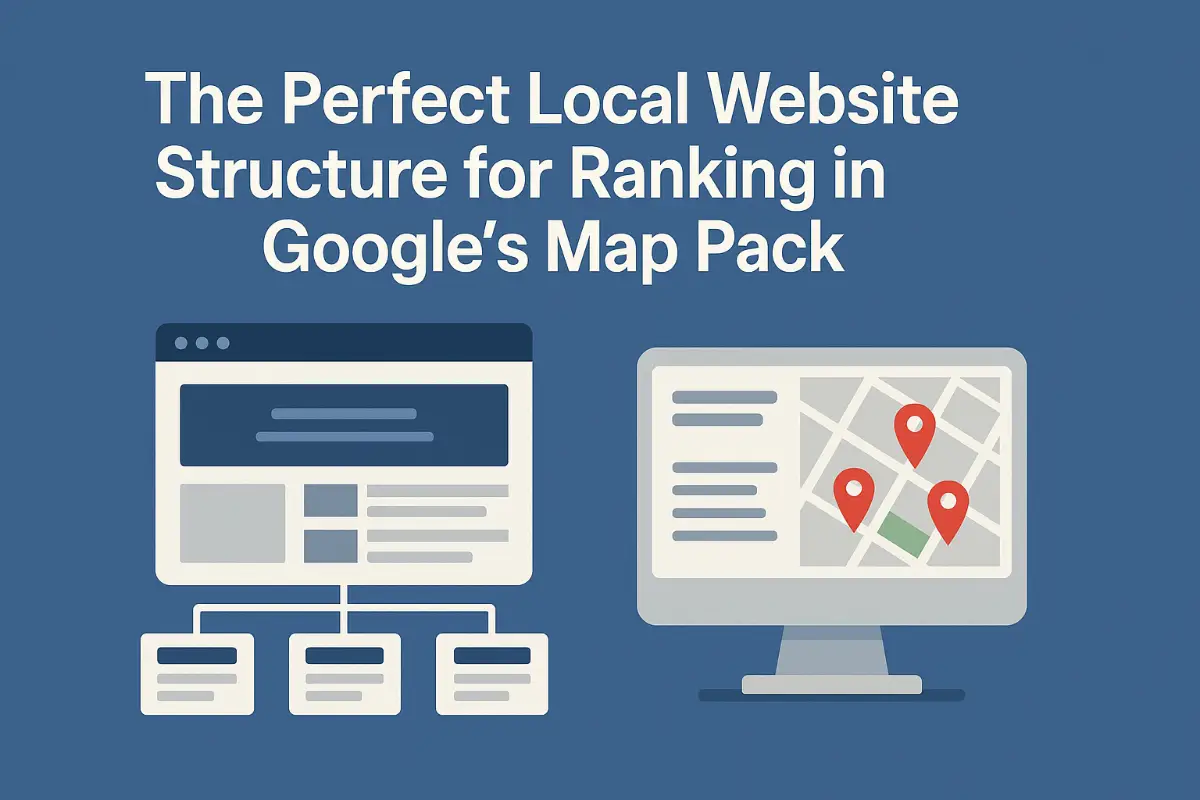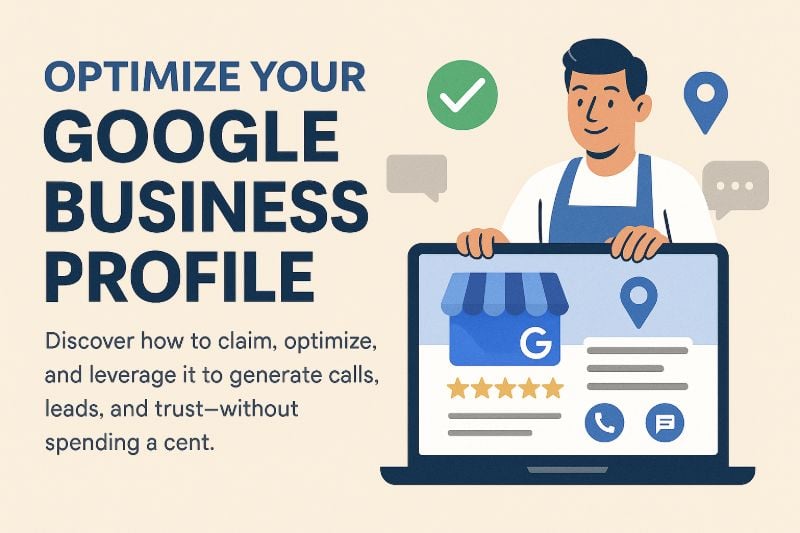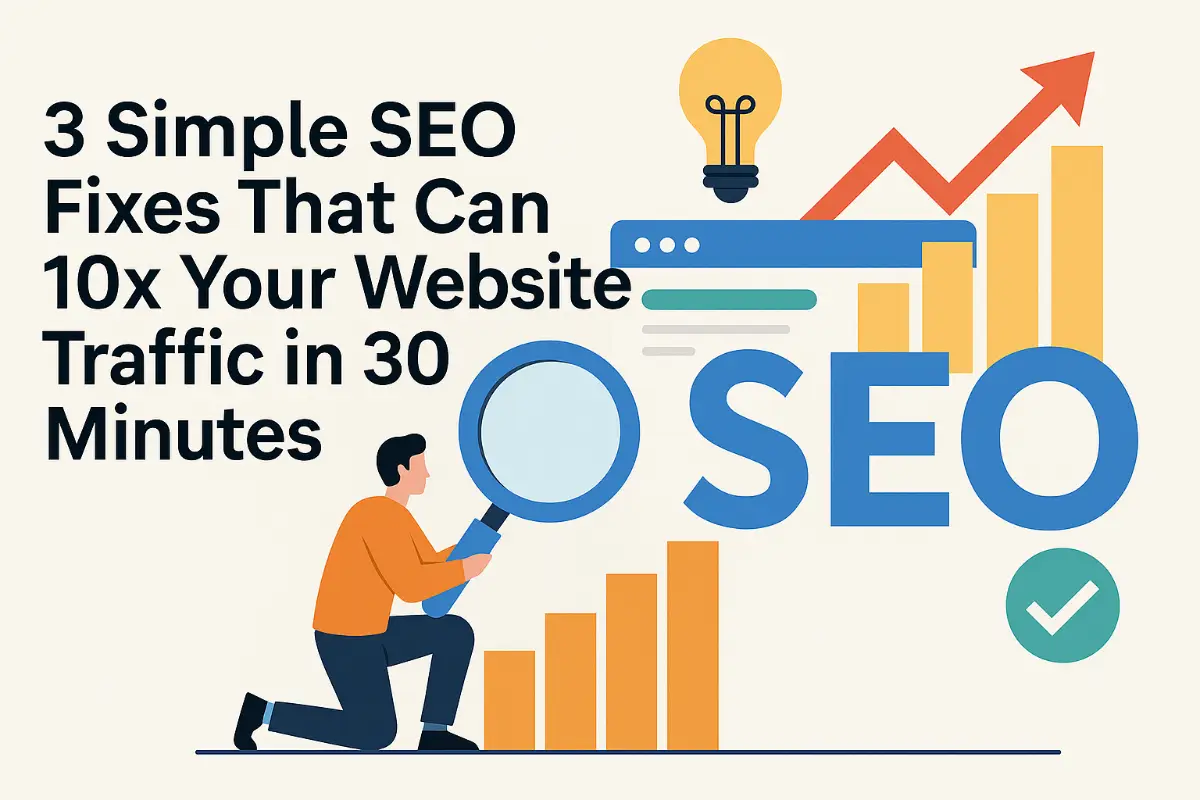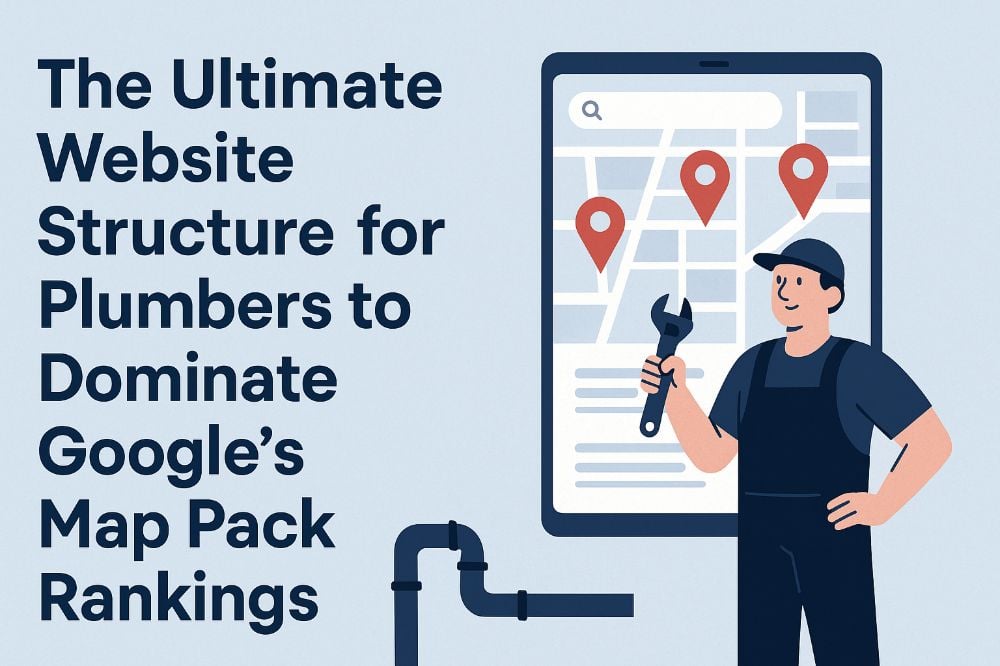
The Perfect Local Website Structure for Ranking in Google’s Map Pack
If you’re a home service business. Trying to rank in the Google Map Pack, your website is either helping or holding you back. While many business owners focus on reviews or ads, the structure of your website plays a major role in whether your Google Business Profile shows up in those top 3 map results.
Whether you're a roofer in Dallas, a plumber in Phoenix, or an HVAC technician in Raleigh, a properly built site does more than look good. It tells Google exactly what you do, where you do it, and why your business deserves to rank higher than your competitors.
This guide breaks down how to structure your website in a way that directly supports your local SEO and boosts your visibility in the map pack, no fluff, no guesswork, just what works.
1. Homepage Optimization: Focus on Your Primary Service and City
Your homepage is the most important page on your website when it comes to local SEO. It usually has the most authority, the most backlinks, and the most visibility, so it needs to clearly target your main service + city combo.
For example, if you're an HVAC contractor in Tampa, your homepage should focus on the phrase “HVAC Services Tampa” or “Tampa Heating and Cooling.” That exact match should be used in:
- Page title: HVAC Services Tampa FL | Licensed Heating & Cooling Experts
- H1 heading: Reliable HVAC Services in Tampa, Florida
- Meta description: Include your top services and coverage area
- First paragraph: Quickly confirm what you offer and who you serve
You should also include:
- A brief summary of your main services, with links to full service pages
- A “Service Areas” section that lists all the cities or neighborhoods you cover
- A short paragraph for each core category from your Google Business Profile
- Your Google reviews and a link to leave one
- An embedded Google Map showing your business location or central service area
Why this works: When Google sees that your homepage content matches what’s listed in your Google Business Profile, and that both mention the same services and location, it reinforces your relevance and improves your chances of ranking in the local map pack.
2. GBP Category Pages vs. Service Pages: Build a Layered Site That Mirrors Google
Your website should reflect the way your business is listed in your Google Business Profile. That means creating content that supports both your primary categories and your specific services. Think of it as a two-tiered system: broad category pages for your core offerings and detailed service pages underneath each one.
Category pages are based on your Google Business Profile categories, like “Plumber,” “HVAC Contractor,” or “Roofing Company.” These pages should act as hubs, each introducing a group of related services.
Service pages go one level deeper and focus on specific tasks your business performs, like water heater installation, AC repair, or flat roof replacement.
Example for a roofing company in Charlotte, NC:
- Category page: Roofing Services in Charlotte, NC
- Service pages:
- Shingle Roof Replacement
- Roof Inspections and Leak Detection
- Storm Damage Repairs
- Metal Roof Installation
Each category page should:
- Introduce the services within that category
- Link to each individual service page
- Target a high-level keyword like “roofing contractor Charlotte NC”
Each service page should:
- Explain what the service is
- Describe how you deliver it and what makes you different
- Include real photos or project examples if possible
- End with a clear call to action (“Get a free estimate,” “Book your service today”)
This structure makes your site easier to navigate, builds relevance across dozens of search terms, and shows Google you’re an expert, not just a generalist. It also improves your chances of showing up for both broad and specific local queries.
3. Why Supporting Content and Internal Links Matter
Your service pages are the foundation of your website, but supporting content is what gives them long-term power. Blog posts, FAQs, case studies, and location-based content help you rank for more keywords, answer common customer questions, and build trust, both with Google and your site visitors.
Think of your site like a neighborhood. Your main service pages are the homes, but it’s the roads between them that make everything work. Those roads are your internal links. They help search engines crawl your content, understand your site structure, and distribute authority to important pages.
Here’s how to build that structure:
- Write supporting content: Create blog posts that answer common questions, explain your process, or compare service options.
- Use smart internal linking: Link blog posts to service pages using keyword-rich anchor text (e.g. “air conditioning repair in Denver”).
- Interlink services: If someone is reading about furnace repair, link them to your thermostat installation page or seasonal maintenance plan.
- Answer FAQs: Create an FAQ section on each service page or a master FAQ that links to deeper content.
Example: If you offer garage door repair in Austin, you might write support articles like:
- “5 Signs Your Garage Door Spring Is Failing”
- “How Long Do Garage Door Motors Last?”
- “The Best Garage Door Brands for Texas Homes”
Each article should link back to your garage door repair page, building authority and helping that service page rank higher for core and related terms.
Pro tip: Always guide your visitors toward the next step. Don’t just write content, use it to lead people toward your service pages and contact forms.
4. Local Area Landing Pages – How to Build Relevance Across Neighborhoods
If your business serves more than one city or suburb, you need local area landing pages to compete in those searches. These pages help you show up when someone searches for your service in a specific area, even if your business address is located in a nearby town.
For example, if your main office is in Nashville but you also serve Franklin, Brentwood, and Hendersonville, you should create dedicated pages like:
- HVAC Services Franklin TN
- Brentwood Air Conditioning Repair
- Heating Services in Hendersonville
Each page should include:
- A unique intro mentioning the area by name
- Details about the specific services you offer there
- Any local issues or conditions relevant to the service (e.g. “frequent power outages in rural areas” for generator installation)
- Mentions of nearby streets, neighborhoods, or landmarks
- A clear call to action and contact options
What not to do: Don’t copy and paste the same template with only the city name changed. Google will pick this up as duplicate content, and you may hurt your rankings. Each page should feel unique and be tailored to the local audience.
Why this works: These local pages tell Google you're active and relevant in multiple service areas, not just your headquarters location. If you want to rank for “electrician in West Palm Beach” but your business is listed in Boca Raton, this is how you bridge the gap.
Used correctly, neighborhood landing pages can help you dominate your region, one suburb at a time.
5. Best Practices for Content Linking and User Flow
It’s not just about having the right pages, it’s about how those pages connect and guide users through your site. Google wants to see a well-organized website, but more importantly, your visitors need to find what they’re looking for quickly and take action without confusion.
Internal linking: Build a logical site structure
Your internal links should connect related pages in a way that makes sense. This helps Google crawl and understand your content, and it helps your customers find what they need.
Best practices:
- Link from your homepage to each main service category
- Link from category pages to individual service pages
- Link supporting blog content back to the core service page it relates to
- Use anchor text that includes your target keyword and location, like “plumbing repairs in Fort Worth” instead of “click here”
User flow: Guide every visitor toward a conversion
Every page on your site should have a clear next step. That might be calling your office, filling out a form, or scheduling a quote. The easier you make it, the more likely someone will convert from a visitor into a lead.
Optimize for user flow by:
- Placing your phone number and CTA buttons near the top of every page
- Using sticky headers on mobile so navigation is always accessible
- Keeping your navigation simple, 3 to 6 main menu items is ideal
- Adding forms to key service and location pages so users don’t have to dig
Google sees strong internal linking and low bounce rates as signs of quality. When your website structure makes it easy for people to browse and take action, it not only helps your SEO, it grows your business.
Conclusion: Structure Your Site for Local Rankings That Last
If you want to rank in Google’s local map pack, and stay there, your website can’t just be a digital brochure. It needs to be a structured, intentional system that supports your Google Business Profile and proves your relevance to both search engines and real people.
From your homepage and service pages to your internal links and neighborhood-specific landing pages, every part of your site plays a role. When it’s all working together, you’ll not only show up higher in local search, you’ll get more calls, more quote requests, and more booked jobs.
Need help putting it all together?
At WebPresence, we build conversion-optimized websites that are designed from the ground up to rank in Google’s local results. Whether you’re a roofing contractor, a home service pro, or a local installer, we help you create a system that gets found and generates real leads.
- Explore our Local SEO Service – Ideal if you already have a website but want stronger rankings and map visibility.
- Need a website too? Check out our Complete Web + SEO Package – A full solution with everything built in, from local SEO strategy to a high-converting website.
Local customers are already searching for your service. Let’s make sure you’re the one they find first.

About the Author
Bernard Schoeman
Farrell Bernard Schoeman is the founder and technical lead at WebPresence, a performance-driven SEO company dedicated to helping local service businesses grow through strategic digital marketing. In this role, he: Leads all SEO and Google Ads strategy and execution, with a focus on ranking local service businesses in both organic search and the Google Map Pack Builds and manages high-performance PPC campaigns, ensuring maximum ROI through precise keyword targeting, smart bidding, and landing page optimization Develops proprietary SEO systems powered by AI to scale content creation, on-page optimization, and local link-building efforts Conducts in-depth audits and strategy roadmaps for clients, aligning marketing tactics with business goals Serves as the direct point of contact for clients, providing transparent reporting, clear communication, and tailored growth plans Continuously refines WebPresence’s internal processes, tools, and service offerings to stay ahead of local algorithm shifts and marketing trends As the technical and strategic lead, Farrell brings hands-on expertise and a results-first mindset to every client partnership, ensuring each campaign drives real visibility, traffic, and revenue growth.



